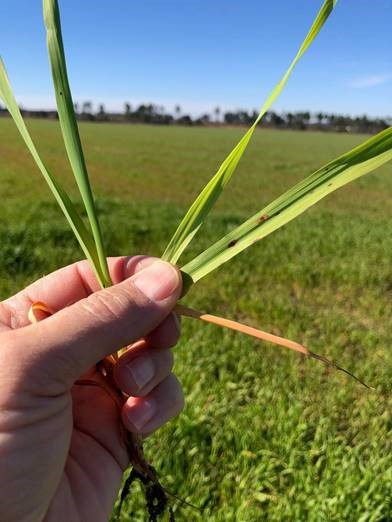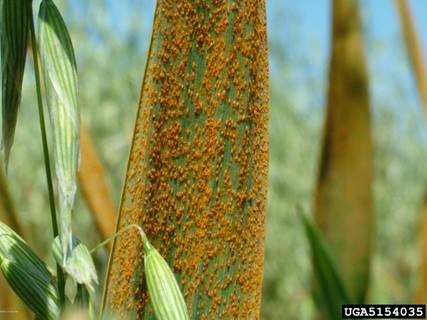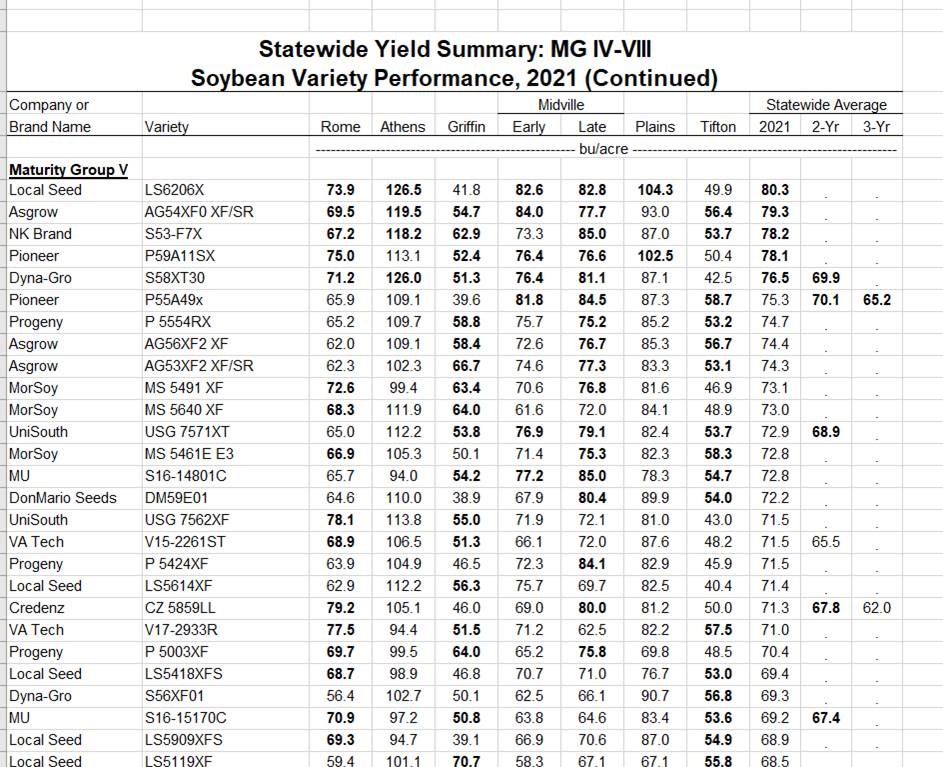By Rome Ethredge
Oat disease
Looking at some Oats being grown for grain this week, I’m seeing treatable levels of weeds and aphids in some fields and some Leaf Blotch disease (aka Drechslera leaf spot) developing. This is pretty common on oats in the winter and according to Dr. Alfredo Martinez, UGA Plant pathologist, it usually isn’t bad enough for chemical control, it usually slows down with warming temperatures. Here 2 photos I took.

I have not seen any yet this year, but our most serious disease in oats is Crown Rust, Puccinia coronate f. sp. avenae, and often fungicide sprays are needed for it. Some oat varieties are resistant but we can’t always rely on that as the disease shifts over time so we can loose that protection. It can get real bad and really affect yield. File photo below.

Soybean Varieties
I’ve attached new 2021 season UGA Soybean variety information. It is on the UGA Variety at this link. https://swvt.uga.edu/content/dam/caes-subsite/statewide-variety-testing/docs/performance-trials/2021/2021-soybean-prelim.pdf
Remember we have 3 distinct soybean growing systems in Georgia; Early System where we plant Indeterminate maturity group 3,4 or sometimes 5, Full Season where we use group 5 through 8 , and Ultra Late, usually group 6 or 7 that are tall growing . We could add another one if you count Double crop beans which is late Full season, use group 6 or 7.
Here’s an excerpt from the UGA Soybean guide concerning variety selection.
“Soybean development is controlled by the determinate or indeterminate growth habit of the particular variety. Determinate soybean varieties are typically range from maturity group (MG) V to MG X; however, some late MG IV soybean varieties are also determinate. Indeterminate varieties typically range from MG 000 to MG IV; however, some early MG V soybean varieties are also indeterminate.
The primary difference between determinate and indeterminate soybean varieties is the termination of vegetative growth and production of nodes on the main stem. Determinate varieties will cease vegetative growth and node production shortly after flowering begins; however, node production on branches will continue until seed fill (R5).
Conversely, indeterminate varieties will continue vegetative growth and node production on the main stem until seed fill begins. Georgia soybean producers may select one of four soybean production systems depending on their specific capabilities and goals. Please read the chapters for each individual soybean production system for agronomic practices and considerations specific to that production system.”
Here’s a link to the 2021 UGA Soybean guide, it’s in the process of being updated for 2022. https://grains.caes.uga.edu/content/dam/caes-subsite/grains/docs/soybean/2021-Soybean-Production-Guide.pdf
